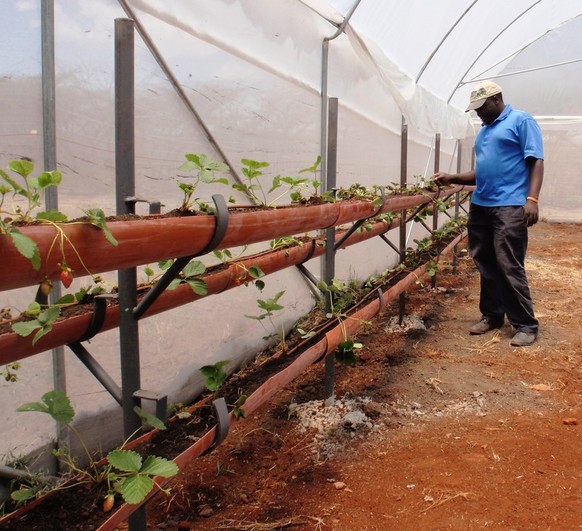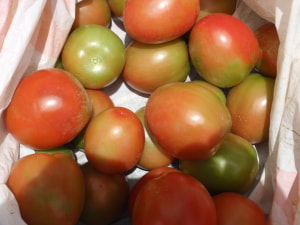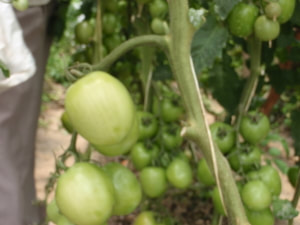Greenhouses

As we have done for over 15 years, we continue to look for ways to assist other children’s homes with their needs for a dependable supply of food. While we will continue to provide them with porridge, fruits and other needed supplements, we also recognize that ultimately they need to be able to have a source of food they can control.
One of the most common requests we get from children homes we work with is for food and finances to pay school fees, medical bills, etc.
With this in mind, we have been supplying several homes that own property with 8 x 15 meter greenhouses, and training them in the management of this resource. To date we have provided over 30 of these units to children’s homes. At peak production these greenhouses can produce more than 200 kg of vegetables a week. Excess produce can be sold to provide funds for medicines, schooling, or other expenses.
A recent success story is from a greenhouse that was built by a team from the US for a local children’s home. They have around 35 children in their care and while they have a nice farm plot, food and funds were always in short supply. After their greenhouse was installed and we spent time training them in proper management they had a great season of harvest of tomatoes and peppers. By the time they reached the end of their six month production cycle of the first planting they informed us that they had been able to pay all school fees, provide all the tomatoes and peppers the home needed, and in selling the excess had over $3200 in the bank. This is a huge boost for a home that struggles to pay monthly bills.
Three greenhouses have also been constructed on the MpM Campus to serve a couple of purposes. First, it will allow us to raise produce for the homes that do not have sufficient property, and are thus not eligible for a greenhouse of their own. Second, it will allow us to conduct “full season” training seminars in only a few days’ time. With each greenhouse at a different stage of the growing season, we can provide hands-on and actual experience of what to do at each point of the growth and harvest season. This, we believe, will allow those we are working with to be far more effective and move closer to self- sustainability.
These greenhouses are also allowing us to experiment with non-typical crops here in Kenya to see what might be other options for the children’s homes. Strawberries, raspberries, and blackberries are just a few of the things that are imported and VERY expensive here. Our initial tests indicate that a greenhouse setting is an ideal place to grow them.
One of the most common requests we get from children homes we work with is for food and finances to pay school fees, medical bills, etc.
With this in mind, we have been supplying several homes that own property with 8 x 15 meter greenhouses, and training them in the management of this resource. To date we have provided over 30 of these units to children’s homes. At peak production these greenhouses can produce more than 200 kg of vegetables a week. Excess produce can be sold to provide funds for medicines, schooling, or other expenses.
A recent success story is from a greenhouse that was built by a team from the US for a local children’s home. They have around 35 children in their care and while they have a nice farm plot, food and funds were always in short supply. After their greenhouse was installed and we spent time training them in proper management they had a great season of harvest of tomatoes and peppers. By the time they reached the end of their six month production cycle of the first planting they informed us that they had been able to pay all school fees, provide all the tomatoes and peppers the home needed, and in selling the excess had over $3200 in the bank. This is a huge boost for a home that struggles to pay monthly bills.
Three greenhouses have also been constructed on the MpM Campus to serve a couple of purposes. First, it will allow us to raise produce for the homes that do not have sufficient property, and are thus not eligible for a greenhouse of their own. Second, it will allow us to conduct “full season” training seminars in only a few days’ time. With each greenhouse at a different stage of the growing season, we can provide hands-on and actual experience of what to do at each point of the growth and harvest season. This, we believe, will allow those we are working with to be far more effective and move closer to self- sustainability.
These greenhouses are also allowing us to experiment with non-typical crops here in Kenya to see what might be other options for the children’s homes. Strawberries, raspberries, and blackberries are just a few of the things that are imported and VERY expensive here. Our initial tests indicate that a greenhouse setting is an ideal place to grow them.



